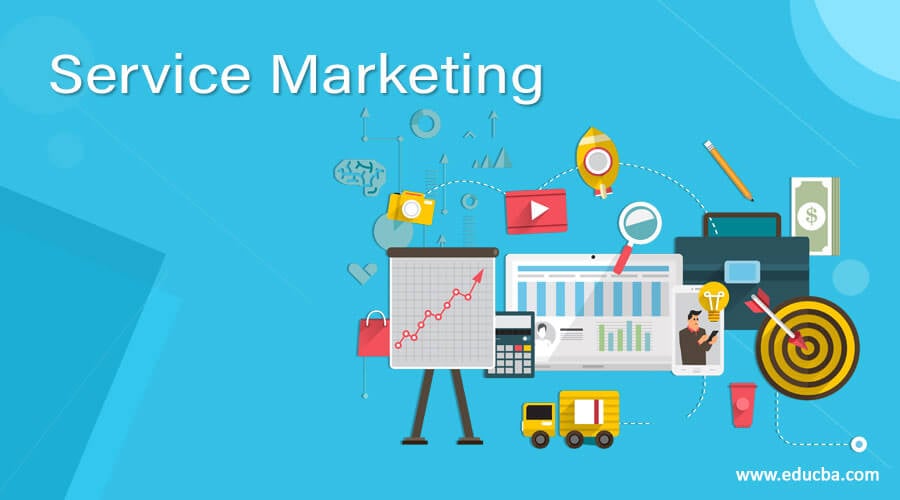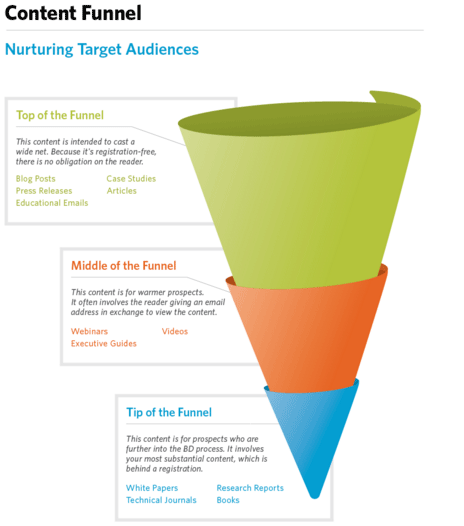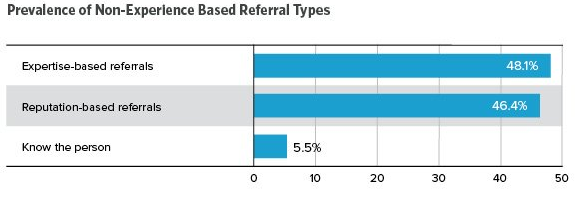
Introduction to Service Marketing Strategies
When service firms think of marketing strategies, they usually consider outbound and direct techniques, i.e. messages sent straight to prospective customers and clients. This approach aims to be persuasive and compelling so that your audience responds to and engages with the service offered.
These techniques will be undeniably in vogue as long as marketing exists. But service marketing strategies have evolved over the years, especially after the arrival of digital marketing. The behavior of service buyers has changed. They are more likely to carry out an internet search to find a service farm and probably read client reviews to evaluate their services.
This has broadened the range of service marketing strategies at your disposal. Staying competitive today means taking the most advantage of various strategies.
But among all the service marketing strategies available in today’s hyper-competitive business environment, which ones will be the best for you? Let’s take a look at the 10 fundamental strategies that will not only help your company stay relevant but will also help you to surge ahead in the competition.
Marketing Strategies for Service Companies
Following are some strategies:
1. Market Research
Research is the bedrock of all present-day marketing efforts. From marketplace to brand research, exhaustive scientific studies can help you to make more informed decisions. It will lend you an objective basis for service marketing and extend valuable baselines to measure your results.
Research helps you to understand your customers better. Market research gives you an insight into how your business processes are performing. You will know what counts your company functions and what marketing strategy you need to spruce up in service sectors.
The impact of market research is obvious. Studies have revealed that firms carry out systematic research regarding their prospect. Clients often grow 3-10 times faster and are up to twice more profitable than peers who don’t carry out any research.
2. Niche Strategy
One of the most important business considerations for service marketing is niche targeting and specialization. Research has shown that some of the fastest-growing service firms are specialists in a carefully selected niche. The niche must be a sector of the industry you thoroughly understand, where you can become an undisputed leader and expert.
Specialization can make all the difference to your marketing efforts. It defines what you do precisely and distinguishes you from the competition. Specialization is a differentiator which proves itself.
3. High-Performance Website
Your company’s website will be one of the most critical assets in the professional service marketplace today. It’s more than just a digital billboard, as many companies previously believed. A good website is central to a service firm’s online presence and an info-rich projection of your expertise in the marketplace.
A website is a major tool for building brand visibility. Prospective clients usually search online to hire service providers. You must have an easily navigable website where people find all the information they need, and you land a better chance of winning a business. Besides, the website will help you demonstrate your expertise and gain better marketplace acceptability. It’s usually seen that around 80% of people hunt online for service marketing firms. The internet has also emerged as the most typical source of all information.
When a visitor lands on your website, robust information, and carefully devised offers can drive leads to closer engagements. It eventually brings qualified business to you. The process of nurturing leads via content is shown below.
The second component of the website which you must consider is the design. Graphic and web designs can greatly influence audience perception, aid recall, and differentiate the business intuitively and swiftly.
The power of a good website design is often undermined. This, in turn, gives a tremendous opportunity to a company to set itself apart from the rest of the competition and convey the credibility that’s needed to drive home the rewards.
The compatibility of your website with a wide range of devices is also important. These include computers, androids, tabs, mobiles, and others. Responsive design, which allows a website to suit a viewer’s device, has become one of the key features for business as more people are using mobile and handheld devices for business. Google has already begun to rank “mobile-friendly” websites higher up the search results. Making a website responsive is now a necessity for service marketing firms.
4. Search Engine Optimization (SEO)
As already said before, the target audience must be able to land on your site without any problem. The website must be effective in that way. And this is where SEO comes in. So much is its importance in the online service marketing puzzle that high-growth companies consider SEO one of the most important strategies available to drive traffic.
SEO is an always-evolving yet complex discipline. It comprises two major components.
- Onsite SEO:
This technique uses targeted keywords for communicating the content of your website, which will appeal to your target audience. Keyword phrases typically focus on your services and help search engines develop more relevant data for the searchers. And when the audience searches for insight into your specialization’s service area, they’ll land on your website.
- Offsite SEO:
It takes the form of back-links to your website via guest articles on other websites or through third-party engagement. These efforts increase the website’s authority as an acknowledged leader in your interest.
As more relevant and high-quality websites link to your sites, popular search engines will understand your credibility, leading to higher rankings.
5. Social Media
If you require more evidence about the relevance of social media for professional services, here’s some info. More than 60% of all buyers check new service providers over social media, which makes it one of the more commonest used information sources than formal recommendations or referrals.
The nature of referrals has changed with the arrival of social media. A recent referral marketing study found that nearly 17% of all expertise-based referrals are based on social media interactions. Simply put, social media acts as an accelerator to reach your expertise, reputation, and content to your target customers. It helps you connect to valuable influencers and contacts and monitor your brand via social listing.
6. Advertising
There are several platforms on which you can advertise your service marketing firm. These commonly include the following.
- Service Industry websites and publications
- Social media
- Google AdWords, search engine marketing (SEM), Yahoo, Bing, and other portals.
- Retargeting: A cookie-based technology that uses a JavaScript code to anonymously follow your audience across the internet and serve relevant advertisements.
Advertising doesn’t merely promote your service marketing. It also plays a major role in driving content downloads and increasing visibility and expertise.
Remember to use various advertising forms that best match your professional service. Networks like LinkedIn and other services for industry-oriented advertising often work best. These networks allow direct targeting of the appropriate customer segment, leading to more conversation, better click rates, and lower download costs. LinkedIn’s analytics tools can provide valuable insights and key metrics to help you target the appropriate customer segment on the platform, leading to more conversation, better click rates, and lower download costs.
Conversely, SEM is usually more expensive and harder to target for extending professional services. At the same time, Facebook advertisements could be less than adequate because professional service customers use them less than other similar networks.
It needs to be remembered simultaneously that each type of advertisement has several variations. A service marketing firm may find them somewhat successful depending on the advertisement purpose, budget, targeting, or industry niche.
7. Referral Service Marketing
The nature of professional service referrals has changed over the years. This has impacted service marketing strategy in a big way. It has been found that more than 81% of service providers have received referrals from people who were never a client.
But from where do all these referrals come? Most of them come from the firm’s expertise or reputation.
Content marketing can be used in connection with the tactics mentioned above. This way, you can build goodwill for your brand and get a widespread reputation for your specialized domain. You build a brand recall among the audience that may not have worked with you. This, in turn, leads to more referrals and new business.
8. Marketing Automation, CRM, and Lead Nurturing
- Marketing automation:
It replaces repetitive manual repetitive and high-touch manual processes with automated ones. The changeover is supported by technology. Automation combines all the online service marketing channels into a single centrally managed system to create, manage, and measure campaigns and programs.
Like any other technological tool, you must select the correct service marketing automation software most suitable for your company. The solution’s complexity, scalability, and size must match your requirements well.
- CRM:
Another useful software is the customer relationship management (CRM) system. Many companies use CRMs for tracking and organizing client information and scouring opportunities. A CRM module, in short, can help you to stay connected and organized, regardless of how complex your operations become.
The CRM system functions as a database for all the related information about clients and opportunities, including detailed notes about interactions. The staff can key in, store, and access information when needed. It leads to the synchronization of efforts across various departments in your firm.
- Lead nurturing:
CRM is not the end of bagging new clients. Remember the lead-nurturing funnel given in the diagram earlier? The website is an important part of the puzzle. Email marketing is also equally important. Analytics-driven and targeted email service marketing campaigns help you deliver hard and soft offers for particular types of buyers tailored to their demands. On the other hand, Drip email campaigns allow you to send targeted offers for segments in your audience over a particular period. It forges a much closer engagement between the service provider and the client and educates via relevant and successive offers and content.
9. Testing and Optimization
Testing and optimization allow you to schedule your marketing efforts and make decisions based on hard facts, not presumptions. While research is at the base of marketing, testing, and optimization are continuous guides. Testing of marketing campaigns should never stop. But they can be adjusted according to market demands.
- A/B testing of landing pages and emails: Using popular A/B tools like Unbounce or Optimizely, learn which landing pages or emails most successfully convert users in various designs, languages, or other elements.
- Landing and email page rendering: Using tools like Email on Acid for testing the rendition of pages on various platforms and devices, ensure they function as they are supposed to.
10. Analytics and Reporting
It’s always important to analyze the proper metrics to measure results effectively. But it would be best if you had the tools to collect accurate data. This includes social media, your website, and SEO.
Among all others, Google Analytics is a crucial tool to measure and analyze the traffic landing on your site. You can improve the SEO results with MOZ, while Hootsuite and similar tools can provide detailed social media analytics.
Regular analysis and testing will help you understand what’s working and what’s not. Use them wisely. They will help you to turn service marketing efforts from an art to a science.
Final Thoughts
The most important thing is not to grow complacent about how you have been doing professionally. To remain competitive, you must regularly put your service marketing strategies under the scanner, assess them, and identify areas for improvement.
You must realize that the online and digital marketing domain is evolving much faster than any of their peer. Service marketing firms that successfully collect and utilize data about their performance—cutting across a range of marketing efforts—will emerge as leaders. But a firm must have the will to succeed as its chief goal, sans which, no strategy is likely to work.
Recommended Articles
Here are some articles that will help you to get more detail about Service Marketing Strategies, so go through the link.



